| 7 March |
• yesterday • tomorrow |
| Optional Memorial of Saints Perpetua and Felicity |
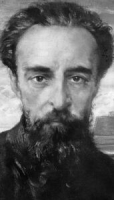
• Father Leontios
• Leonid F'odorov
27 June as one of the Martyrs Killed Under Communist Regimes in Eastern Europe
Russian Orthodox family and upbringing. His father died when Leonid was very young, and he was raised by his mother, Liubova Dimitrievna. He started his studies in the Orthodox seminary in 1901, but in 1902 he left, travelled to Rome, Italy, and converted to Catholicism.
Studied at Anagni and Rome, and the Freiburg, Germany. Assisted at the coronation of Pope Pope Pius X on 9 August 1903. Doctorate in philosophy in 1905; degree in theology in 1907. Deacon on 22 March 1911, and ordained a Greek Catholic priest on 25 March 1911 in Bosnia. Monk at the Studite monastery in Bosnia, beginning his noviate on 20 May 1912 and admitted to the habit on 12 February 1913, taking the name Father Leontios.
He returned to Saint Petersburg and was immediately arrested for his faith, and sent to Siberia. Released in March 1917 during an amnesty for political and religious prisoners, he returned to Saint Petersburg, and was appointed Exarch of the Russian Greek Catholic Church. The Communist takeover later that year began a period of persecution of the faith and the faithful, with 1922 ushering in the era of violent suppression of Christianity. All churches were ordered closed on 5 December 1922. Father Leontios and fourteen priests were arrested for their faith in January 1923, sent to Moscow for trial; sentenced to ten years exile to Solovky and Vladka.
Released in 1926, he relocated to Kaluga. Arrested again for spreading the faith, he was sentenced to ten years in Solovetsky where a large monastery had been converted to a prison. There he continued to minister to the faithful, conducting covert Masses, using wine made from raisins sent by the families of prisoners. Transferred to forced labour camp at Pinega on 6 August 1929 where he was billeted with an imprisoned Orthodox priest; after work, Leontios conducted catechism class for local boys. Transferred to Arkhangelsk, to Kotlas, and to Poltava. The poor conditions and steady overwork broke his health, and in 1932 he was certified as an invalid. He completed his sentence in 1933, but was barred from returing to many Russian cities, and had to live in exile the rest of his life. One of the Martyrs Under Communism in Eastern Europe.
4 November 1879 at Saint Petersburg, Russia
• 7 March 1935 of "natural causes"
• buried at Kirov, Russia
27 June 2001 by Pope John Paul II in Ukraine
O Merciful Lord Jesus, Our Saviour, hear the prayers and petitions of Your unworthy sinful servants who humbly call upon You and make us all to be one in Your one, holy, catholic, and apostolic Church. Flood our souls with Your unquenchable light. Put an end to religious disagreements, and grant that we Your disciples and Your beloved children may all worship You with a single heart and voice. Fulfill quickly, O grace-giving Lord, your promise that there shall be one flock and one Divine Shepherd of Your Church; and may we be made worthy to glorify Your Holy Name now and ever and unto the ages of ages. Amen. - prayer for unity by Blessed Leonid
https://catholicsaints.info/blessed-leonid-feodorov/
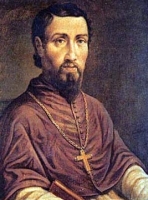
20 September as one of the Martyrs of Korea
Born to a poor family, Siméon felt a call to the priesthood at age ten. He entered the seminary in Mans, France in 1831. Due to health problems, he had to leave seminary for two years during which time he worked as a tutor. Ordained a diocesan priest on 20 May 1837, Father Berneux served as a professor and spiritual director at the Mons seminary.
Feeling a call to missionary work, he joined the Paris Foreign Missions Society in 1839, and left for the Asian missions on 13 January 1840. He arrived first in Manila, Philippines before being assigned to the Tonkin region of modern Vietnam on 17 January 1841. He began his work near a small convent outside the town of Moi-yen, learning the Annam language. Arrested on Holy Saturday 1841 during one of the periodic anti–Christian persecutions, Siméon and a brother priest were dragged from place to place, ordered to renounce Christianity, ordered to convince lay people to renounce the faith, and when their persecutors finally realized that the priests would not cooperate, they were sentenced to death on 8 October 1842.
However, before the sentence could be officially approved, a French official learned of their imprisonment, and had them released on 7 March 1843. Father Berneux was sent to the Chinese province of Manchuria where he continued his missionary work there for ten years, sometimes in Singapore or Macao. On 5 August 1854 he was chosen the fourth Vicar Apostolic of Korea by Pope Pius IX, and arrived there with some fellow missionaries in early 1856; for administrative reasons he was also appointed titular bishop of Capsa. He learned Korean, spent time on the road visiting rural Christians, started a seminary in Pae-ron, founded several schools, and started a printing house that published Catholic works in Korean. Thousands were baptized during his time as bishop, but a palace coup in 1864 and threats of Russian invasion led to a resurgence in anti-Western, anti–Christian nationalism and official persecution of the Church. Bishop Berneux was arrested on 23 February 1866. He was taken to the capital, and from 3 to 7 March he was repeatedly beaten and interrogated under torture until the bones in his legs were shattered. As he was dragged to his death, Father Siméon preached to the people who had come out to witness the execution, and to remind his fellow sufferers that they died for the kingdom of God. Martyr.
14 May 1814 in Château-du-Loir, Sarthe, France
• tortured, blinded by having quicklime thrown in his eyes, and then beheaded on 7 March 1866 on a beach beside the Han River in Sae-nam-teo, Seoul, South Korea
• relics transferred to Berlin, Germany in 2001
6 May 1984 by Pope John Paul II
https://catholicsaints.info/saint-simeon-francois-berneux/
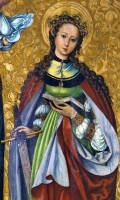
• Vibia Perpetua
• Vivia Perpetua
Lay-woman born to a noble pagan family. Convert to Christianity. Wife and mother. Martyred with her maid, friend, and fellow convert Saint Felicitas. In centuries past, their story was so popular that Saint Augustine of Hippo warned against giving it the weight of Scripture.
mauled by wild beasts and beheaded 7 March 203 at Carthage, North Africa
• cattle
• married women
• martyrs
• Carthage, Tunisia
• Santa Perpètua de Mogoda, Catalonia, Spain
• cow
• woman with a sword beside her
• woman with a bull, ox, leopard or lion in an amphitheater
The day of the martyrs' victory dawned. They marched from their cells into the amphitheater, as if into heaven, with cheerful looks and graceful bearing. If they trembled it was for joy and not for fear. Perpetua was the first to be thrown down, and she fell prostrate. She got up and, seeing that Felicity was prostrate, went over and reached out her hand to her and lifted her up. Both stood up together. Rousing herself as if from sleep (so deeply had she been in spiritual ecstasy), she began to look around. To everyone's amazement she said, "When are we going to be led to the beasts?" When she heard that it had already happened she did not at first believe it until she saw the marks of violence on her body and her clothing. The people, however, had demanded that the martyrs be led to the middle of the amphitheater. They wanted to see the sword thrust into the bodies of the victims, so that their eyes might share in the slaughter. Without being asked they went where the people wanted them to go; but first they kissed one another, to complete their witness with the customary kiss of peace. Bravest and happiest martyrs! You were called and chosen for the glory and our Lord Jesus Christ. - from a story of the death of the martyrs at Carthage
https://catholicsaints.info/saint-perpetua/
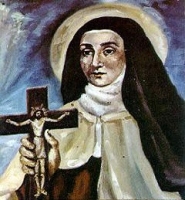
• Ann Maria Redi
• Anna Maria Redi
• Anne Mary Redi
• Teresa Margaret of the Sacred Heart
• Teresa Margherita Redi of the Sacred Heart
Born to the Tuscan nobility, the daughter of Count Ignatius Redi and Camilla Billeti. Pious child who saw God in all things, and who was confused to learn that not everyone knew that God loved them.
Educated at the Saint Apollonia convent at Florence, Italy from age nine. A gentle and mature child, she was often left in to watch over her peers. Noted for an intense desire for her First Communion, and for a devotion to Our Lady. Had an extensive correspondence with her father, discussing her spiritual life in great detail; she asked that he destroy each letter after reading it, and sadly, he did so.
In September 1763 she received a message from Saint Teresa of Jesus advising her to become a Carmelite. Anna went home to Arezzo, Italy at age 17, but returned to Florence almost immediately. Became a Discalced Carmelite, joining the convent of Saint Teresa on 1 September 1764, and taking the name Teresa Margaret of the Sacred Heart. She received the veil on 11 March 1765, and made her final vows on 12 March 1766.
Sister Teresa worked in the convent's infirmary, and appeared to have a gift of healing. She predicted her own death less than five years after making her final vows. Her short life and vocation were spent in contemplative union with God as she ever meditated on her favourite phrase, "God is love."
15 July 1747 at Arezzo, Tuscany, Italy as Anna Maria Redi
• 7 March 1770 at Florence, Italy of a severe and painful abdominal disorder
• post-mortem, all the swelling and discoloration in her body disappeared, her body was incorrupt several weeks later, had a healthy glow, and exuded an odor of perfume
19 March 1934 by Pope Pius XI
https://catholicsaints.info/saint-teresa-margaret-redi/
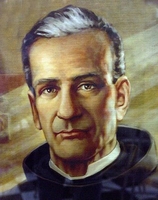
Poor People's Priest (though he wasn't a priest)
José was abandoned as an infant at the age of one month at the Saint Joseph orphanage in Havana, Cuba; he had a note which had his birthdate and the statement that he had not been baptized. The orphanage baptized him 2 days later, and he lived there till he was 7 years old when he was transferred to the Benefencia orphanage, also in Havana.
In 1834 joined the Brothers Hospitallers of Saint John of God, finishing his novitiate in April 1835, and assigned to work at the Brothers hospital in Puerto Príncipe (modern Camagüey, Cuba); he worked there as a nurse for the rest of his life. Appointed head nurse of the hospitals in 1845. Chosen prior of the Brothers in Camagüey. The Archbishop of Santiago de Cuba recommended that he enter the priesthood, but Brother José declined as he would not longer be able to continue his work in the hospital. He cared for people during cholera epidemics, and treated the wounded to both sides in the Ten Years War in Cuba from 1868 to 1878; he was able to prevent a massacre of civilians ordered by the Spanish forces. Due to the suppression of religious orders by the Spanish government, he was the only surviving member of the Hospitallers in Cuba for the last 13 years of his life.
12 February 1820 in Havana, Cuba
• 7 March 1889 in Camagüey, Cuba of natural causes
• re-interred at the chapel of the Brothers Hospitallers of Saint John of God hospital in Camagüey
• 29 November 2008 by Pope Benedict XVI
• beatification celebrated at the Plaza de La Caridad, Camagüey, Cuba, presided by Cardinal José Saraiva Martins
• his was the first beatification cemetery celebrated in Cuba
• the beatification miracle involved the healing of three-year-old Daniela Cabrera Ramos
https://catholicsaints.info/blessed-jose-olallo-valdes/
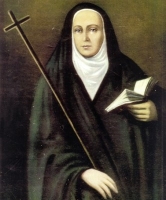
• María Antonia of Saint Joseph
• Mama Antula
Raised in a pious family, Maria early felt a call to religious life, but as there were no cloistered religious congregations in the region at the time, she simply donned a black robe and moved in with some other women who felt the same call. Under the spiritual direction of Jesuit Father Gaspar Juarez, she taught children, cared for the sick and poor, did needlework to help support herself, and assisted at retreats based on the Spiritual Exercises of Saint Ignatius of Loyola. In 1767, King Charles III of Spain expelled the Jesuits; with her spiritual director gone, Maria herself started leading the retreats. She met some hostility as the Exercises are associated with Jesuits, but for years she used them as the basis for retreats in several cities, bringing the message of Christ to tens of thousands of people, and received the support of Archbishop Sebastián Malvar y Pinto of Buenos Aires. Founded the Daughters of the Divine Savior and a retreat house in Buenos Aires which continues its good work over two centuries later.
1730 in Silípica, Santiago del Estero, Argentina
• 6 to 7 March 1799 in the retreat house in Buenos Aires, Argentina of natural causes
• interred in the Church of Our Lady of Mercy in Buenos Aires
• 27 August 2016 by Pope Francis
• beatification recognition celebrated at Francisco de Aguirre Park, Santiago del Estero, Argentina, presided by Cardinal Angelo Amato
• her beatification miracle involved the 1904 healing of Sister Rosa Vanina
https://catholicsaints.info/blessed-maria-antonia-de-paz-y-figueroa/
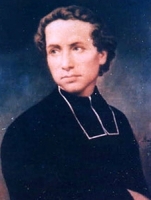
Pere Païk Chen Fou (Father White as Snow)
20 September as one of the Martyrs of Korea
Born to the nobility, he was well educated, and earned a degree in Lyon, France in 1856. Simon entered the Sulpician seminary in Paris, France in 1859. He joined the Paris Foreign Missions Society, and began studying at their seminary on 25 July 1861. Ordained on 21 May 1864. Assigned to Korea, it took ten months of travel before he was able to sneak into the country on 29 May 1865 to begin ministering to Christians during a period of persecution. Worked with Saint Siméon-François Berneux. Arrested on 26 February 1866, he was imprisoned, tortured and martyred with his bishop and two brother priests.
28 February 1838 in the home of his maternal grand-parents at Châlon-sur-Saône, Saône-et-Loire, France
tortured, blinded by having quicklime thrown in his eyes, and then beheaded on 7 March 1866 on a beach beside the Han River in Saenamteo, Seoul, South Korea
6 May 1984 by Pope John Paul II
https://catholicsaints.info/saint-simon-marie-just-ranfer-de-bretenieres/
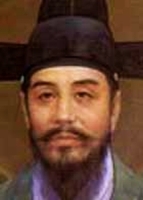
• Nam Jong-Sam
• Yohan
• John the Baptist Nam Chong-sam
20 September as one of the Martyrs of Korea
Lifelong layman in the apostolic vicariate of Korea. Well educated, he embarked at an early age on a career in civil service, and by age 39 was a regional governor. However, John had trouble reconciling his official duties with his Christianity, and he finally resigned in order to work with missionaries, teaching them the Korean language. He moved to Seoul and earned his living teaching Chinese literature to the children of high officials. With increasing fears of a Russian invasion in 1866, a wave of anti-foreign and anti–Christian nationalism swept through the country. John-Baptiste was enlisted to bring in French officials to help resolve the matter, but he was eventually swept up in the persecutions that followed, being arrested, tortured and murdered for his faith. Martyr.
1817 in Chungju, Chungcheong-do, South Korea
7 March 1866 at the Small West Gate, Seoul, South Korea
6 May 1984 by Pope John Paul II
https://catholicsaints.info/saint-ioannes-baptista-nam-chong-sam/
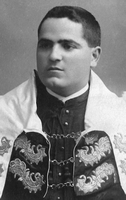
After studies at the Guadix Seminary, Manual was ordained a priest of the archdiocese of Granada, Spain on 6 June 1912. He served as pastor in the Spanish cities of Baza, Castil, Iznalloz, in the cathedral of Guadix, and as a professor at the San Torcuato Seminary.
After his parish church in in Iznalloz was burned in the early days of the Spanish Civil War, Father Manuel moved to Granada where he served as a parish until the anti–Catholic militia found him, imprisoned him for several months, and then executed him. Martyr.
5 June 1889 in Moreda, Granada, Spain
• 7 March 1937 in Sierra Nevada, Granada, Spain
• we have no information on how his body was disposed of
• 26 February 2022 by Pope Francis
• beatification celebrated at the Cathedral of La Encarnación del Señor, Granada, Spain
https://catholicsaints.info/blessed-manuel-vilchez-montalvo/
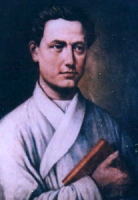
• 20 September as one of the Martyrs of Korea
• 21 May (diocese of Bourdeaux, France)
Bernard-Louis's father died when the boy was very young, but his mother raised him with a good Christian education. He entered the seminary of the diocese of Bordeaux, France at age 17, but health problems caused his studies to take a little longer than normal. He joined the Paris Foreign Missions Society in 1863, was ordained on 21 May 1864, and sent to the missions in Korea where he worked and died with Saint Siméon-François Berneux. Tortured and martyred in one of the anti–Christian persecutions.
8 October 1840 in Langon, Gironde, France
tortured, blinded by having quicklime thrown in his eyes, and then beheaded on 7 March 1866 on a beach beside the Han River in Sae-nam-teo, Seoul, South Korea
6 May 1984 by Pope John Paul II
https://catholicsaints.info/saint-bernard-louis-beaulieu/

Felicitas
Lay-woman. Convert. Maid, friend, and fellow convert of Saint Perpetua. Martyred with her. In centuries past their story was so popular that Saint Augustine of Hippo warned against giving it the weight of Scripture.
mauled by wild beasts and beheaded 7 March 203 at Carthage, North Africa
• cattle
• martyrs
• bull
• cow
• pregnant woman holding a cross
• woman with a sword by her
• woman with a bull or ox in an amphitheater
https://catholicsaints.info/saint-felicity-of-carthage/
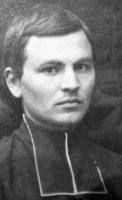
Peter Henricus Dorie
20 September as one of the Martyrs of Korea
Studied at the seminaries of Sables-d'Olonne and Luçon. Ordained a priest on 21 May 1864. Member of the Paris Foreign Missions Society, and assigned to missionary work in Korea. Tortured and martyred in one of the anti–Christian persecutions.
23 September 1839 in St-Hilaire-de-Talmont, Vendée, France
tortured, blinded by having quicklime thrown in his eyes, and then beheaded on 7 March 1866 on a beach beside the Han River in Saenamteo, Seoul, South Korea
6 May 1984 by Pope John Paul II
https://catholicsaints.info/saint-pierre-henri-dorie/
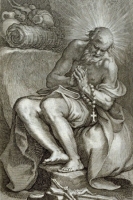 Also known as
Also known as
Paolo il Semplice
Farmer. Upon the discovery of his wife's adultery, Paul became a desert hermit. Spiritual student of Saint Anthony the Abbot. Given the title The Simple for his simple and humble acceptance of the teachings. Received visions, and known as a miracle worker.
c.339 of natural causes
I cannot help the boy, for I have not received power over the Prince of the demons. Paul the Simple, however, does have this gift. – Saint Anthony the Abbot when confronted with a boy apparently possessed
https://catholicsaints.info/saint-paul-the-simple/
Drausius, Drausin
Bishop of Soissons, France. Established several foundations, even getting the tyrant Ebroin, who cared nothing for the Church, to help establish a chapel for sick nuns. Mediaeval legend says that to spend the night at Drausinus' tomb made one invincible; whole platoons of soldiers used to camp out at the tomb the night before a battle. His patronage also helps thwart the plans of your enemies, and Saint Thomas Becket visited the tomb before returning to the treachery he knew awaited him at home.
c.674 of natural causes
• against enemy plots
• champions
• invincible people
https://catholicsaints.info/saint-drausinus-of-soissons/
Easterwine, Eosterwine, Esterwinus
Born to the Northumbrian nobility. Soldier in the army of King Egfrid of Northumbria. Monk at Wearmouth Abbey at age 24 with his relative Saint Benedict Biscop. Ordained in 679. Succeeded Saint Benedict as abbot in 682. Noted for his gentleness to all and for living and working side by side with his brother monks.
in 650 in Northumbria, England
• 6 March 686 of natural causes
• interred by the door of the Church of Saint Peter at Wearmouth Abbey
• relics later translated to a shrine near the high altar of the church
https://catholicsaints.info/saint-esterwine-of-wearmouth/
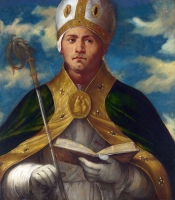
Gaudioso
Bishop of Brescia, Italy.
• c.445
• relics re-discovered and re-enshrined at the church of Sant'Alessandro in Brescia, Italy in 1454
• relics hidden in private chapel of the Da Ponte family during the anti–Christian excesses of the French Revolution
• relics re-enshrined at Sant'Alessandro in 1823
https://catholicsaints.info/saint-gaudiosus-of-brescia/
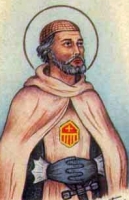
Mercedarian lay knight. Noted for his openness, charity and deep prayer life. In Tunis, while working to free Christians held as slaves by Muslims, he was scourged for expressing his Christianity publicly, but survived to return to Spain.
• predicted the date of his death, and choirs of angels were reported to be heard in his cell when he died
• buried at the Mercedarian church in Barcelona, Spain of natural causes
https://catholicsaints.info/blessed-henry-of-austria/
Celloc, Cellan (one of these may have been his original name)
One of the first Christians in Ireland, baptized c.347, and coming to the faith even before the work of Saint Patrick. Hermit in the vicinity of six other holy converts at Magh-Scethe, near modern Lismore, Ireland. Legend says that all seven of these men, including Mocelloc, had a vision on the night of the birth of Saint Declan of Ardmore that the baby would grow to be a great spiritual leader.
https://catholicsaints.info/saint-mocelloc-of-magh-scethe/
Parish priest. Rector of Saint Ethelburga's, Bishopgate, London, England from 1504 to 1524. Rector of Woodford, Essex from 1526 to 1527. Rector at Chelsea, London. Friend of and imprisoned with Saint Thomas More. Executed with Blessed German Gardiner and Blessed John Ireland for denying that the King of England had supremacy over the Church, and for the crime of being a priest. Martyr.
7 March 1544 at Tyburn, London, England
29 December 1886 by Pope Leo XIII (cultus confirmed)
https://catholicsaints.info/blessed-john-larke/

Travelled from Batanaea to Caesarea in Palestine to visit and minister to the Christians there. Martyred with Saint Adrian in the persecutions of governor Firmilian.
7 March 308
https://catholicsaints.info/saint-eubulus/
Jermyn Gardiner
Educated at the University of Cambridge, England. Secretary to the bishop of Winchester, England. Martyred with Blessed John Larke for refusing to recognize the spiritual supremacy of the King of England.
martyred on 7 March 1544 at Tyburn, London, England
29 December 1886 by Pope Leo XIII (cultus confirmation)
https://catholicsaints.info/blessed-german-gardiner/
Priest. Augustinian canon at the Segeberg monastery and fortress in modern Schleswig-Holstein, Germany, where he was a spiritual student of Saint Vicelin of Oldenburg. He served as a missionary to the surrounding area until he was killed by pagans. Martyr.
• c.1135 near Segeberg, Germany
• relics interred in Neumünster, Germany
https://catholicsaints.info/blessed-volker-of-segeberg/
Married layman in the apostolic vicariate of Vientiane (in modern Laos). Martyr.
1934 in Sam Neua, Houaphan, Laos
7 March 1970 in Den Din, Vientiane, Laos
• 11 December 2016 by Pope Francis
• beatification recognition celebrated in Vientiane, Laos, presided by Cardinal Angelo Amato
https://catholicsaints.info/blessed-maisam-pho-inpeng/
Ardone, Smaragdus
Monk at the abbey of Aniane, France, taking the name Ardo. Director of the abbey schools. Travelled with Saint Benedict of Aniane, served as his secretary, and wrote his biography. Abbot at Aniane.
Languedoc (part of modern France) as Smaragdus
843 of natural causes
https://catholicsaints.info/saint-ardo-of-aniane/
Married layman catechist in the apostolic vicariate of Vientiane (in modern Laos). Martyr.
1938 in Ban Pha Hôk, Xieng Khouang, Laos
7 March 1970 in Den Din, Vientiane, Laos
• 11 December 2016 by Pope Francis
• beatification recognition celebrated in Vientiane, Laos, presided by Cardinal Angelo Amato
https://catholicsaints.info/blessed-luc-sy/
Priest. Chaplain to Blessed John Larke and Saint Thomas More. Rector at Eltham, Kent, England from 1535 to 1536. Martyred with Blessed German Gardiner and Blessed John Larke for denying that the King of England had supremacy over the Church.
7 March 1544 at Tyburn, London, England
15 December 1929 by Pope Pius XI
https://catholicsaints.info/blessed-john-ireland/
Daniel of Verden
Chosen bishop of Verden, Germany on 27 November 1342, he served for nearly 14 years before retiring to the Carmelite monastery in Cologne, Germany in 1356.
7 March 1364 at the Cistercian monastery in Altenberg, Germany of natural causes
https://catholicsaints.info/blessed-daniel-of-wichterich/
• Paul of Pelusium
• Paul of Plousias
Bishop of Prusa, Bithynia (part of modern Turkey). Opposed the iconoclasts, and for his trouble he was exiled to Egypt where he spent the rest of his life.
840 in Egypt of natural causes
https://catholicsaints.info/saint-paul-of-prusa/
William the Englishman
May have been a priest. Joined the Franciscans and travelled with Saint Francis of Assisi in the early days of the Order.
England
1232 in Assisi, Italy of natural causes
https://catholicsaints.info/blessed-william-of-assisi/
Reginhard
Monk of Helmarshausen in modern Bad Karlshafen, Germany. Monk and head of the abbey school at Stavelot, Belgium. First abbot at Reinhausen, Germany in 1130.
c.1168
https://catholicsaints.info/blessed-reinhard-of-reinhausen/
Sixth century founder and abbey of Bodfari Abbey in Clwyd, Wales.
https://catholicsaints.info/saint-deifer-of-bodfari/
Wenedoc
Venerated in Wales.
c.520
https://catholicsaints.info/saint-enodoch/

A catechist and three students martyred together for teaching and learning the faith. We know little more than their names - Revocatus, Saturninus, Saturus and Secundulus.
mauled by wild beasts and beheaded 7 March 203 at Carthage, North Africa
https://catholicsaints.info/martyrs-of-carthage-7-march/
CatholicSaints.Info Portable Edition